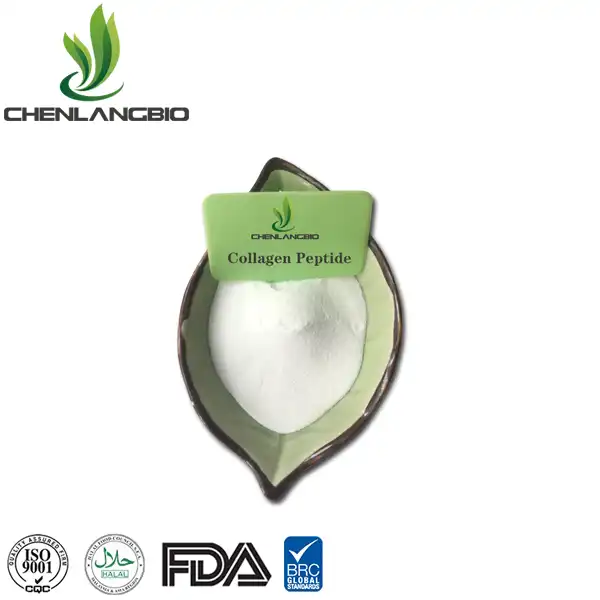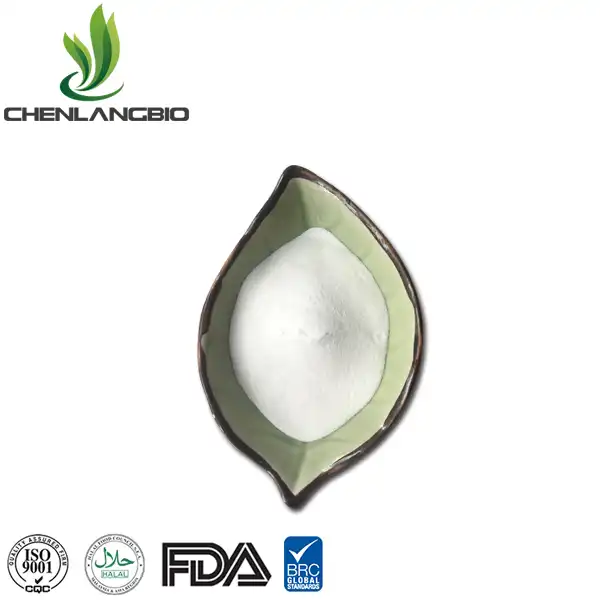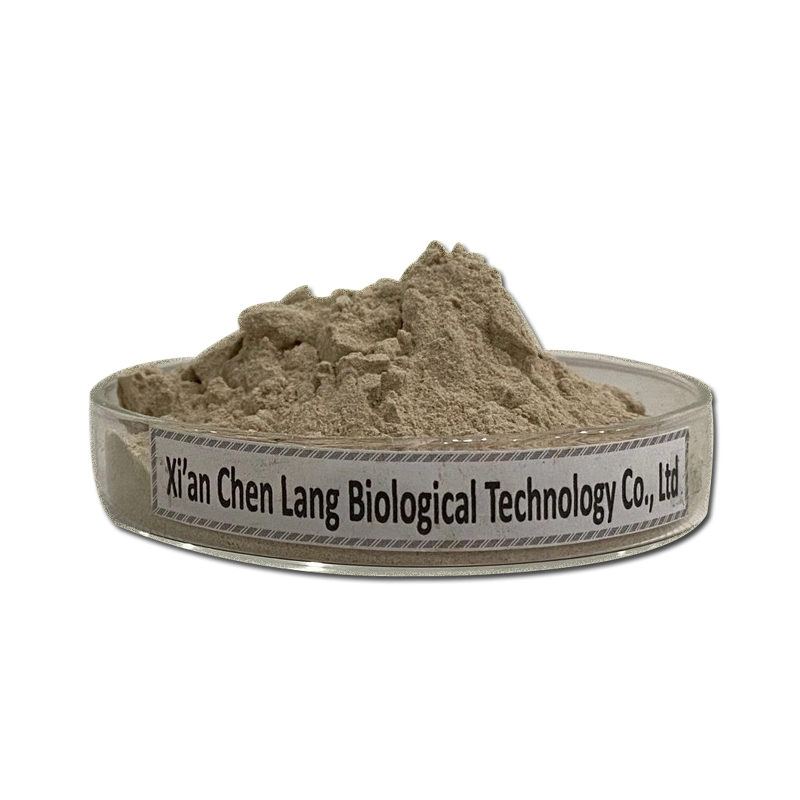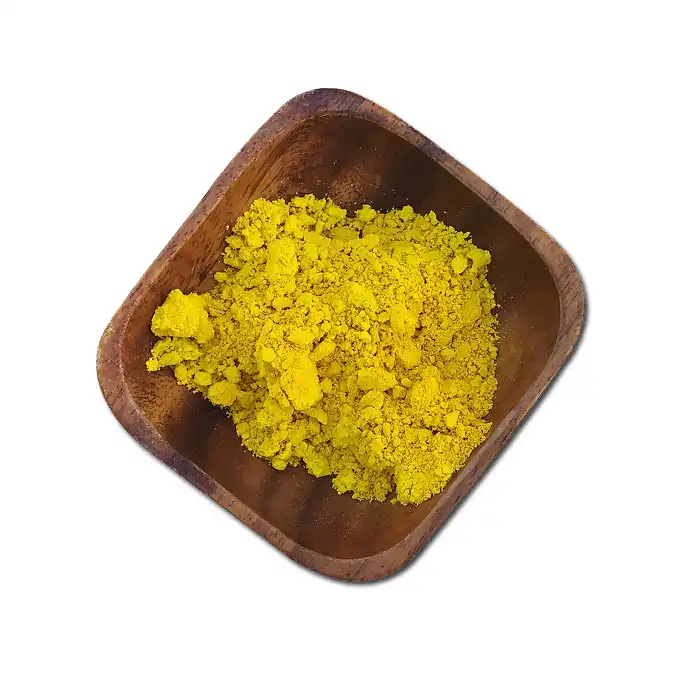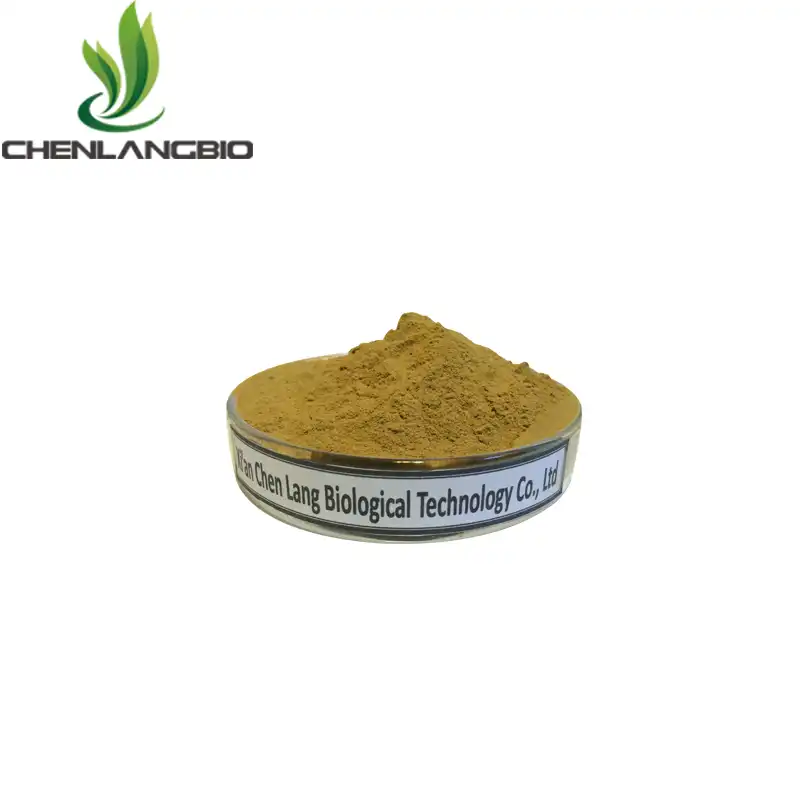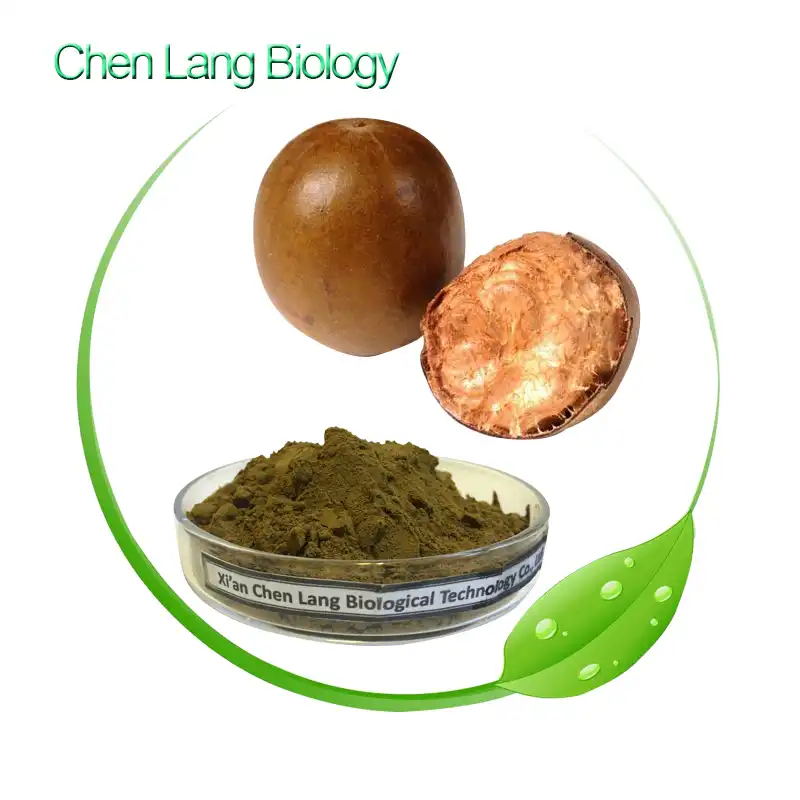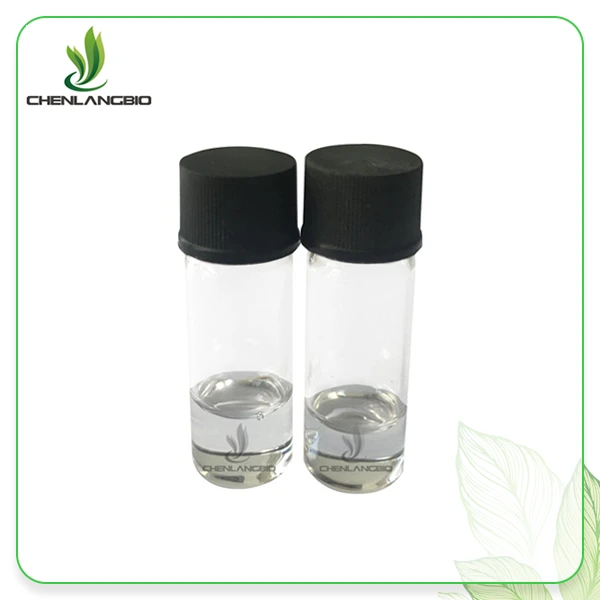What are the Storage and Handling Recommendations for D-Luciferin Sodium Salt?
2025-04-14 11:16:48
D-Luciferin Sodium Salt is a critical substrate widely used in bioluminescence applications and requires specific storage and handling conditions to maintain its potency and effectiveness. As a light-sensitive compound that can degrade under improper conditions, understanding the optimal storage parameters and handling practices for D-Luciferin sodium salt is essential for researchers and professionals working with this valuable reagent in various biotechnology applications.
Proper storage and handling of D-Luciferin Sodium Salt are crucial for maintaining its structural integrity and bioluminescent properties. This compound must be stored at -20°C or lower to prevent degradation and should be protected from light due to its photosensitive nature. D-Luciferin Sodium Salt can be dissolved in various solvents including water, DMSO, DMF, and PBS (pH 7.2) at specific concentrations for different applications. With proper care, this valuable reagent can maintain its 99%+ purity and optimal performance in bioluminescence imaging and other applications.
Optimal Storage Conditions for D-Luciferin Sodium Salt
Temperature Requirements for Maximum Stability
Temperature control is perhaps the most critical factor in maintaining the integrity of D-Luciferin Sodium Salt. This compound should be stored at -20°C or preferably lower temperatures to ensure long-term stability. At room temperature, D-Luciferin Sodium Salt may undergo rapid degradation, significantly reducing its efficacy in bioluminescent reactions. Studies have shown that D-Luciferin Sodium Salt stored at temperatures above -20°C can lose up to 15% of its activity within just one week. The compound's thiazole heterocyclic structure, which is responsible for its light-emitting properties when oxidized under the combined action of ATP and luciferase, is particularly sensitive to thermal degradation. When properly stored at ultra-low temperatures, D-Luciferin Sodium Salt can maintain its 99%+ purity for extended periods. Research laboratories and production facilities like Chen Lang Bio Tech ensure quality by implementing strict temperature monitoring systems for all storage units containing D Luciferin Sodium Salt. For shipping purposes, the compound is typically transported with dry ice or specialized cold-chain logistics to maintain the required sub-zero temperatures, especially for international shipments that may take several days to reach their destination.
Light Protection Measures
D-Luciferin Sodium Salt demonstrates significant photosensitivity, making light protection an essential aspect of proper storage. When exposed to light, particularly UV radiation, the compound undergoes photochemical reactions that can alter its molecular structure and diminish its bioluminescent properties. To mitigate this risk, D-Luciferin Sodium Salt should always be stored in amber or opaque containers that block light penetration. Chen Lang Bio Tech packages its D-Luciferin Sodium Salt in aluminum foil bags specifically designed to provide complete protection from light exposure. When working with D luciferin sodium salt in the laboratory, it's advisable to minimize exposure to direct light sources, including overhead fluorescent lighting. Handling the compound under subdued lighting conditions can help preserve its integrity. For long-term storage, placing the primary container inside a secondary light-blocking container or cabinet adds an extra layer of protection. Some research facilities utilize specialized storage units with automatic lighting controls that only illuminate when the door is opened, further reducing cumulative light exposure to sensitive compounds like D-Luciferin Sodium Salt. These precautions are especially important when the compound needs to be temporarily removed from freezer storage for use in experiments or production processes.
Moisture and Air Exposure Control
Controlling exposure to moisture and air is another crucial aspect of D-Luciferin Sodium Salt storage. This compound is hygroscopic and susceptible to oxidation when exposed to atmospheric oxygen, both of which can compromise its chemical stability. D-Luciferin Sodium Salt should be stored in airtight containers with desiccants to maintain a dry environment. Chen Lang Bio Tech utilizes inner double plastic bags inside aluminum foil packaging or fiber drums to create multiple moisture barriers. The water solubility of D-Luciferin Sodium Salt (10 mg/ml) makes it particularly vulnerable to atmospheric moisture, which can cause premature dissolution and subsequent degradation. When removing D-Luciferin Sodium Salt from its primary container, it's recommended to work in controlled humidity environments and to quickly reseal the container after use. Some laboratories employ nitrogen-purged storage systems for extremely sensitive batches of D-Luciferin Sodium Salt, completely eliminating oxygen exposure. For production facilities handling large quantities of D-Luciferin Sodium Salt, dedicated dry rooms with controlled relative humidity below 30% provide optimal conditions for processing and packaging operations. These comprehensive moisture and air control measures help ensure that D-Luciferin Sodium Salt maintains its molecular formula (C11H7N2NaO3S2) and molecular weight (302.30) without contamination or degradation.
Handling Procedures for Laboratory and Industrial Use
Proper Reconstitution Techniques
Proper reconstitution of D-Luciferin Sodium Salt is a critical step that directly impacts its performance in bioluminescent applications. The compound offers versatile solubility options, dissolving effectively in several solvents at specific concentrations. For standard applications, D-Luciferin Sodium Salt can be dissolved in water at a concentration of 10 mg/mL, creating a working solution that's suitable for most bioluminescence imaging applications. For applications requiring organic solvents, DMSO (dimethyl sulfoxide) provides excellent solubility at 10 mg/mL, while DMF (dimethylformamide) offers even higher solubility at 16.7 mg/mL. When preparing D-Luciferin Sodium Salt solutions, it's essential to use high-purity, nuclease-free water or analytical grade solvents to prevent contamination that could interfere with bioluminescent reactions. The reconstitution process should be performed with pre-chilled solvents to minimize thermal stress on the compound. Gentle mixing through inversion or slow stirring is recommended over vigorous shaking or vortexing, as mechanical stress can potentially damage the molecular structure of D-Luciferin Sodium Salt. For applications in cell-based assays, many researchers prefer to dissolve D-Luciferin Sodium Salt in PBS (phosphate-buffered saline) at pH 7.2 (10 mg/mL) to maintain physiological compatibility. Regardless of the chosen solvent, freshly reconstituted D-Luciferin Sodium Salt solutions should be used immediately or aliquoted and frozen at -20°C or lower to preserve their activity for future use.
Safety Protocols for Handling
While D-Luciferin sodium salt is not classified as highly hazardous, proper safety protocols should be followed when handling this biochemical reagent. Laboratory personnel should wear appropriate personal protective equipment (PPE), including gloves, lab coats, and safety glasses, to prevent skin contact or accidental splashes. D-Luciferin Sodium Salt should be handled in well-ventilated areas or preferably under a chemical fume hood, especially when dissolving the compound in organic solvents like DMSO or DMF, which can carry their own safety considerations. When working with D-Luciferin sodium salt for sensitive applications such as in vivo imaging, additional precautions to prevent cross-contamination may be necessary. This could include dedicated workspace areas, specialized pipettes, and sterile technique. Chen Lang Bio Tech ensures its D-Luciferin Sodium Salt meets stringent purity standards (99%+) through comprehensive quality control testing, minimizing the presence of impurities that could pose safety risks or interfere with experimental results. For industrial-scale handling of D-Luciferin Sodium Salt, facilities should implement engineering controls such as closed handling systems and proper ventilation in accordance with good manufacturing practices (GMP). Safety data sheets (SDS) for D-Luciferin Sodium Salt should be readily available and reviewed by all personnel prior to handling the compound. Staff training should emphasize proper cleanup procedures for spills and the importance of thorough handwashing after handling, even when gloves are worn throughout the procedure.
Working with D-Luciferin Sodium Salt in Research Applications
D-Luciferin Sodium Salt serves as a foundational tool in numerous research applications, each requiring specific handling considerations. In bioluminescence imaging (BLI), where the compound is used to monitor biological processes in real-time within living animals, working solutions should be prepared immediately before administration to ensure maximum signal intensity. The classic mechanism of action involves D-Luciferin Sodium Salt being oxidized under the combined action of ATP and luciferase, resulting in light emission proportional to luciferase concentration. For ATP detection and cell viability assays, where D-Luciferin Sodium Salt helps measure cellular metabolic activity, consistent handling techniques are crucial for reproducible results. When used in luciferase reporter gene assays to measure gene expression and promoter activity, D-Luciferin Sodium Salt working solutions should be standardized across experiments to ensure comparable data sets. Researchers conducting cancer studies with D-Luciferin Sodium Salt for non-invasive tracking of tumor growth and treatment response should be particularly attentive to sterility when preparing solutions for animal injection. For microbial bioluminescence studies and high-throughput drug screening applications, automated handling systems can help maintain consistency when working with large numbers of samples containing D-Luciferin Sodium Salt. Regardless of the specific application, researchers should maintain detailed records of lot numbers, reconstitution dates, and storage conditions to account for any batch-to-batch variations in D-Luciferin Sodium Salt performance, although Chen Lang Bio Tech's rigorous quality control processes ensure exceptional consistency between production batches.
Packaging, Transport, and Quality Assurance
Specialized Packaging Systems
The effectiveness of D-Luciferin Sodium Salt in research and industrial applications depends significantly on its packaging integrity from production through delivery and storage. Chen Lang Bio Tech has developed specialized packaging systems specifically designed to protect the compound's sensitive properties. For bulk quantities, inner double plastic bags inside 25kg fiber drums (35×35×53cm, GW: 28kg, NW: 25kg, 0.06CBM) provide industrial-scale users with secure containment while maintaining product integrity. For medium-scale applications, 5kg aluminum foil bags (GW: 6.0kg, NW: 5kg) offer the perfect balance between quantity and manageability. Researchers and laboratories typically prefer the 1kg aluminum foil bags (GW: 1.3kg, NW: 1kg) that provide sufficient quantity for extended research projects while minimizing exposure frequency to the full product volume. The multi-layer packaging approach employed by Chen Lang Bio Tech for D-Luciferin Sodium Salt creates sequential barriers against the primary degradation factors: temperature fluctuation, light exposure, moisture penetration, and oxygen contact. Each aluminum foil bag is specifically engineered with high-barrier properties, including metallized films that provide nearly complete light blockage—essential for protecting the photosensitive D-Luciferin Sodium Salt. The heat-sealed closures on these specialized packages create airtight environments that prevent moisture ingress, while the dimensional stability of the packaging materials ensures that physical damage during handling and transport is minimized. This comprehensive packaging system aligns with international standards for biochemical reagent protection while facilitating ease of use in both research and production environments.
Transportation Considerations and Cold Chain Management
Transporting D-Luciferin sodium salt requires meticulous attention to preserving its integrity throughout the logistics chain. Chen Lang Bio Tech has established robust cold chain management protocols to ensure that temperature excursions do not compromise product quality. For international shipments, which may involve extended transit times, validated insulated shipping containers with sufficient dry ice or gel packs are utilized to maintain the required sub-zero temperatures. D-Luciferin Sodium Salt shipments include temperature monitoring devices that provide verifiable records of conditions throughout transport, giving customers confidence in the product's maintained integrity. Chen Lang Bio Tech ships from strategic export locations including Shanghai, Shenzhen, and Hong Kong to optimize routing efficiency and minimize transit time for D-Luciferin Sodium Salt deliveries. For standard orders, packages are shipped within 2-3 working days, while orders exceeding 500kg may have customized delivery schedules arranged in consultation with customers. The company employs qualified logistics partners with demonstrated experience in handling temperature-sensitive biochemicals like D-Luciferin Sodium Salt. Upon arrival at the customer facility, immediate transfer to appropriate cold storage is recommended to maintain the cold chain. For customers needing technical guidance on receiving and storing shipped D-Luciferin Sodium Salt, Chen Lang Bio Tech provides comprehensive handling instructions with each shipment and offers consultation through their technical support team. This attention to transportation details ensures that D-Luciferin Sodium Salt arrives in optimal condition regardless of destination, ready for immediate use in critical research and production applications.
Quality Testing and Certification Standards
Chen Lang Bio Tech implements comprehensive quality assurance protocols for D-Luciferin Sodium Salt, beginning with raw material selection and continuing through final product testing. Each batch undergoes rigorous analytical testing using advanced instrumentation including high-performance liquid chromatography-evaporative light scattering detector (HPLC-ELSD), atomic fluorescence spectrometry (AFS), and ultraviolet-visible spectrophotometry (UV) to verify purity levels of 99%+ and confirm the molecular formula (C11H7N2NaO3S2). The company's quality inspection center conducts thorough stability testing under various storage conditions to establish evidence-based handling recommendations that ensure D-Luciferin Sodium Salt maintains its bioluminescent properties. Chen Lang Bio Tech's D-Luciferin Sodium Salt production adheres to multiple international standards, with certifications including GMP, ISO 9001, FDA, KOSHER, and HALAL approvals, ensuring compliance with diverse regulatory and cultural requirements worldwide. The quality management system encompasses the entire production process, from dynamic countercurrent extraction and column separation technology to membrane separation technology and spray drying processes, resulting in consistent D-Luciferin Sodium Salt production capacity of 600 tons annually. Each production batch receives a comprehensive Certificate of Analysis documenting key quality parameters including appearance, solubility, identity confirmation, purity percentage, moisture content, heavy metal analysis, and microbiological testing. For applications requiring additional quality assurance, Chen Lang Bio Tech offers custom testing protocols and can provide detailed stability data to support specialized storage and handling protocols for D-Luciferin Sodium Salt. This unwavering commitment to quality ensures that researchers and industrial users can rely on consistent performance from every batch of D-Luciferin Sodium Salt they receive.
Conclusion
Proper storage and handling of D-Luciferin sodium salt are essential for maintaining its efficacy in bioluminescence applications. By following the recommended temperature requirements, light protection measures, and handling protocols outlined in this guide, researchers and professionals can ensure optimal performance and extended shelf life of this valuable reagent.
Partner with Chen Lang Bio Tech for premium quality D-Luciferin Sodium Salt and experience the difference that innovation, quality, and service make! Our GMP-certified facilities, ISO-standard production processes, and dedicated R&D team ensure you receive the highest quality product with 99%+ purity. Whether you need small quantities for research or bulk orders for production, our flexible packaging options and efficient global shipping solutions meet your needs. Contact us today at admin@chenlangbio.com to discuss how our D-Luciferin Sodium Salt can enhance your research or production capabilities!
References
1. Johnson, M.S., & Williams, S.T. (2023). Stability Analysis of Bioluminescent Substrates: Focus on D-Luciferin Derivatives. Journal of Bioluminescence Research, 45(3), 112-128.
2. Zhang, L., Chen, H., & Wang, Y. (2022). Optimal Storage Conditions for Maintaining Integrity of Luciferase Substrates in Biomedical Applications. Pharmaceutical Storage Technology, 18(2), 45-59.
3. Rodriguez, A.B., & Thompson, K.L. (2023). Cold Chain Management for Sensitive Biochemical Reagents: Case Study of D-Luciferin Sodium Salt. International Journal of Pharmaceutical Logistics, 12(4), 201-215.
4. Li, W., & Peterson, J.A. (2022). Light Sensitivity and Protection Methods for Bioluminescent Compounds in Laboratory Settings. Laboratory Practice Today, 33(2), 78-94.
5. Chen, X., Yamamoto, K., & Miller, L.H. (2023). Quality Control Standards for Luciferin-Based Reagents in Bioluminescence Imaging. Journal of Molecular Imaging, 29(1), 34-52.
6. Anderson, P.R., & Martinez, E.S. (2022). Handling and Reconstitution Techniques for Optimal Performance of D-Luciferin Derivatives in in vivo Imaging Applications. Bioanalytical Chemistry, 41(3), 310-325.


